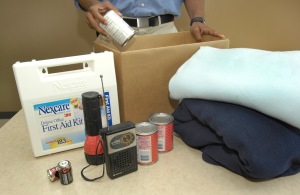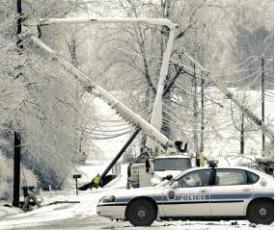September marks the tenth annual National Preparedness Month and as an active participant in the U.S. Department of Homeland Security’s Ready Campaign, we would like to share with you some tips on preparing for emergencies and what to do if you lose power.

Preparing for Emergencies
To prepare for emergency situations, I encourage you to assemble an emergency kit that contains the following items:
- Flashlights and fresh batteries
- Battery-powered radio or TV and extra batteries
- Land-line phone with cord (cordless phones require electricity)
- Battery-powered or windup alarm clock
- Supply of bottled water (one gallon per person per day)
- Non-perishable foods that require no heating
- Blankets, bedding or sleeping bags
- First-aid kit and prescription medications
- Hand-operated can opener
- Special medical or infant supplies
- A variety of hand tools
- List of emergency phone numbers
As part of your preparation, it’s important to know what you and your family will do in an emergency situation. Ready.gov provides a helpful template for you to make a plan and share it with each family member.
If Power Goes Out
Staying safe during an emergency situation should be your top priority. Here are some ways to stay safe if you lose power:
- Report outages and downed wires at 1-877-737-2662, online at pepco.com, or using our mobile app.
- Never go near downed wires and always stay clear of working crews
- Locate your emergency kit
- Avoid wet and flooded areas as electricity and water are a dangerous combination
- Unplug or turn off most lamps, TVs and appliances
- Keep freezer and refrigerator doors shut
- In summer, close shades or curtains to keep rooms cooler
- In winter, let the sun warm rooms during the day; at night close shades or curtains to keep warmth in
- Be safe around candles/open flames
- If you are operating a generator, make sure that you follow all safety guidelines
We’ve also created a handbook to help you be prepared before, during and after storms. Please print it and keep it with other essential storm-related items in your home.


